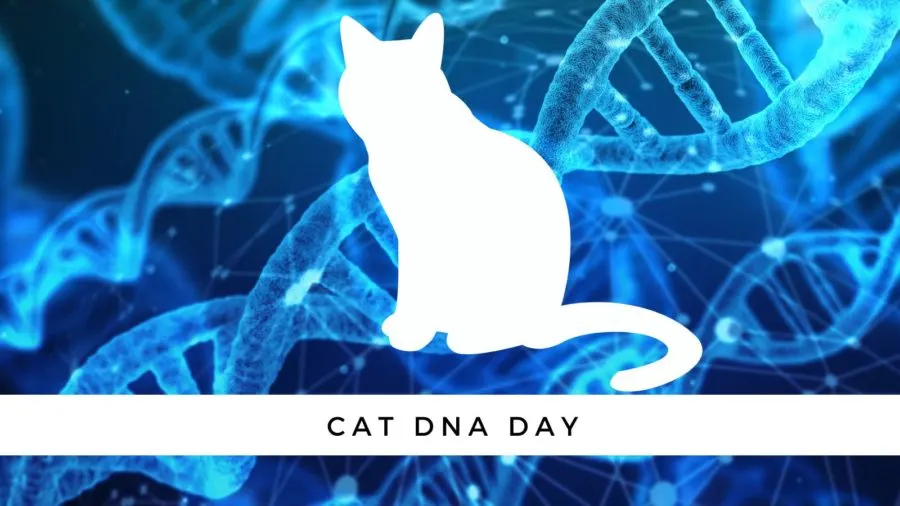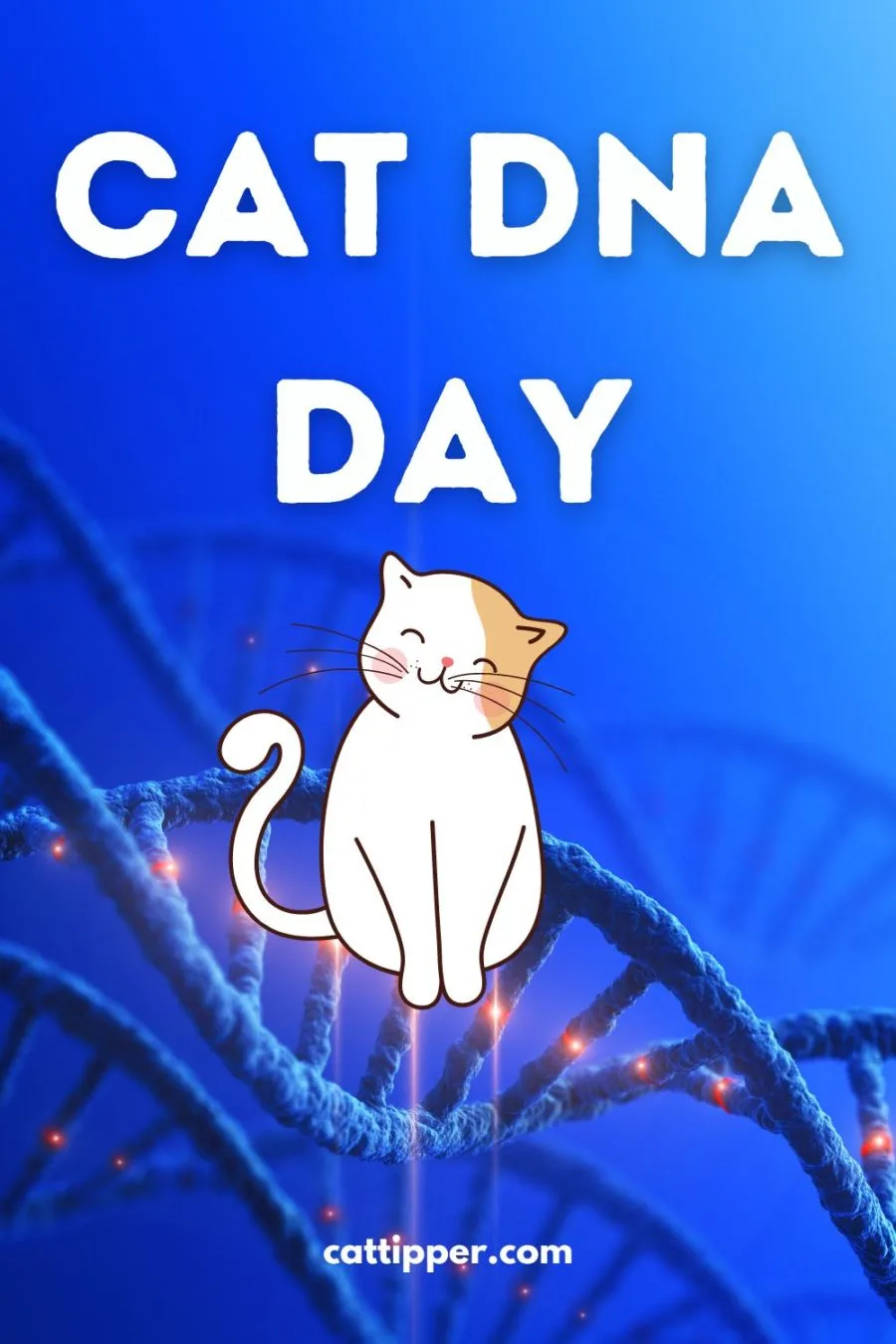When you adopt a cat, he or she becomes part of your lifelong family tree–but do you wonder about what breeds make up your cat’s family tree? Or what hereditary conditions he might be prone to developing? Cat DNA testing helps solve some of the mysteries behind our cats and helps detect the risk of certain diseases. Cat DNA Day highlights the fast-growing field of cat genetics.

This post includes affiliate links.
When is Cat DNA Day?
Cat DNA Day is recognized every year on September 19. The day wasn’t selected at random: the ninth month represents the nine lives of cats while the date signifies the 19 pairs of chromosomes each cat possesses. This pet holiday was launched in 2020 by pet genetics company Basepaws.
What does a cat DNA test tell you?
Cat DNA tests can offer a wealth of information about any individual cat. For instance, a cat DNA test will reveal the lineage of a cat, meaning that many of the specific breed(s) in a cat’s ancestry will be made clear.
The results of a cat DNA test will include a DNA report for the kitty that was tested. This report describes specific traits of a cat and contains a map of the cat’s chromosomes.
The primary reason cat DNA tests are so important is that they screen for particular health markers associated with various diseases. This helps the cat owner know if their feline friend is predisposed to any health conditions and allows them to plan accordingly.
DNA tests convey a cat’s risk of developing a disease by examining if a cat has a genetic marker associated with a certain disease. If your pet’s association to a particular disease is clear, it does not possess a genetic marker associated with a certain disease.
Cats can also be carriers of a disease, but this is not necessarily bad news-being a carrier simply means that a cat has a copy of a recessive genetic marker associated with a disease.
While a cat that is a carrier of a disease is not afflicted with the disease, it could pass it on to its offspring and they could become afflicted.
A health report may also suggest that a cat is either at risk or at high risk for developing a disease. In these cases, cats possess a certain genetic marker associated with a disease or health condition, so they are prone to complications from the condition associated with the genetic marker(s) that they have.
How do you collect DNA from a cat?
No need for any extreme measures when it comes to collecting DNA from your kitty–simply use the swab that is included with the test kit to collect DNA from the inside of your furry friend’s cheek.
This can be accomplished by rotating the swab around the inside of a cat’s cheek. The swab will come into contact with a cat’s teeth, cheek, and saliva as it accumulates DNA.
After five seconds or so, the swab can be sealed within the swab containment unit and sent to the address specified by the DNA test company. A complete DNA test will be accessible shortly after with plenty of information about your feline friend.
Collecting DNA samples from a cat can be conducted at any point in a cat’s life–even when they’re a kitten! You don’t have to wait for this cat holiday to roll around ever year…any day makes a good time to test your cat’s DNA.
How much does a DNA test for a cat cost?
Owners interested in a comprehensive DNA test for their cat companions that includes a breed report, complete health report, and access to a report that continuously updates as new information is discovered can purchase cat DNA tests online.
Currently the BasePaws Cat DNA test is priced at $129 on Amazon. Wisdom Panel Complete is also priced at $129.
DNA tests in this price range also tend to include some other cool features like genetic diversity statements and/or blood type reports.
How accurate are cat DNA tests?
Overall, any cat DNA test will provide satisfactory insight into potential health concerns for a cat.
The aspect of a cat DNA test that is the most prone to inaccuracy is discovering the particular breeds of cats that make up the ancestry of your furry friend. This happens to be the case because an assortment of different cat breeds have been created in the last century following the discovery of individual cats with unique mutations.
Breeds like the Sphynx or Devon Rex are the result of individual cats with special mutations, and more cat breeds could result from similar situations in the future.
Since some breeds have only existed for a few decades, the database of genetic information that a company has access to may be fairly limited for certain breeds.
As cat DNA tests become more commonplace and accessible in the coming decades, companies will expand their knowledge of cat genetics and undoubtedly continue to improve upon their products.
Fun Facts About Your Cat’s DNA
- When it comes to DNA similarity, humans and cats share 90% of their DNA.
- Cats possess 19 pairs of chromosomes, while humans have 23 pairs.
- Cats can end up with several unusual features due to their genetics, but the most frequently developed feature is extra toes.
- A coat of fur that is purely brown is quite rare in cats, with only a few breeds being able to produce such a color.
- The variations of colors in breeds such as the Siamese are due to a recessive gene that causes cooler parts of the cat’s body to be darker. Therefore, the ears and tail are among the darkest body parts of a Siamese.
Pin it to remember Cat DNA Day!

- 🎉 GIVEAWAY: Lord of the Pets Portrait of Your Cat! - November 26, 2024
- Review: Lord of the Pets Cat Portraits! - November 26, 2024
- Cat Adoption: FAQ You Might Have - June 28, 2024
